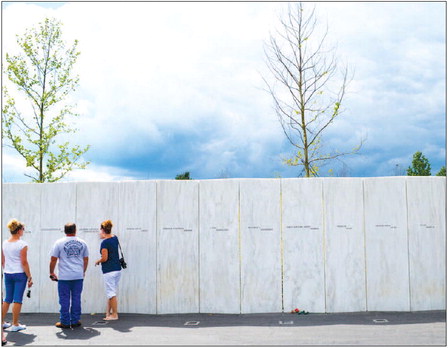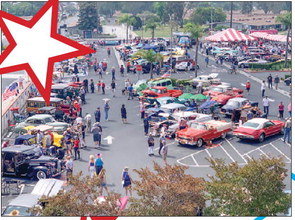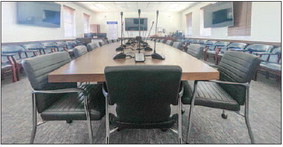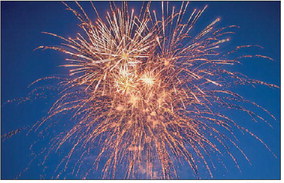9/11


to pay attention to the reporting.”
As we watched, I inquired of my students how many had ever been to New York City; only two had. I explained to them that the World Trade Center (WTC) buildings were 104 stories, about a quarter of a mile high.
“That’s like taking that track out there, unfolding it and putting it up on its end.”
Their eyes widened.
I drew diagrams of what the center looked like and explained to them that it was not misnamed; it was the world’s trade center.
I explained how magnificent the view was from the restaurant at the very top, where on a day like today, you literally could see for miles. I explained there were 90-plus floors of office space, and underground, a three-story shopping mall, parking facility and control rooms for the PATH trains, subway links and more.
For three years, I had lived in Jersey City, less than a mile from the Trade Center, which I could view from my window each night. Often I would watch as lights turned on and off, complete floors, all through the night, as commerce continued uninterrupted across the world.
I worked in downtown Manhattan and daily rode the PATH train one stop, under the Hudson River, to the bowels of the WTC. I rode an escalator up one platform, crossed through the shopping mall, exited the front of the building and walked four blocks to my office at Wall Street Plaza.
When visitors came, I would often take them into the city on a morning commute, have them ride up one of the 14 escalators, stop at the platform and watch as the throng of passengers filed past.
Within 10 minutes thousands of people rushed by, coming from New Jersey to work in lower Manhattan.
They marveled that the equivalent of the total population of their hometowns had just passed by.
The WTC welcomed PATH trains every three minutes during rush hour, and these were always filled to capacity.
Further, you could access five different subway lines either directly or through tunnels from the underground location. I knew that potentially thousands of people were at risk underground, let alone the estimated 40,000 who worked in the buildings.
And then the reporters announced that a plane had crashed into the Pentagon. It was astounding.
When that happened, I said, “If I were the head of the FAA, I would ground every plane right now.”
But I also told my students if that were done, it would effectively shut down the U.S. economy. Such a decision would cripple us for months. We watched and listened; the hour passed, no students left.
Dan Rather reported for CBS that the FAA ordered all aircraft grounded.
He also compared this attack to the bombing of Pearl Harbor, to which I immediately took exception.
“No,” I said, “this is not at all like Pearl Harbor. The Japanese bombed a military installation. This is a bunch of savage terror- ists who have commandeered civilian aircraft, using them and their passengers as ammunition to hit civilian targets.”
We continued to watch in horror. A few minutes past 10 a.m., they announced the crash of Flight 93.
When they said Shanksville, one of my students cried out. It was her hometown. Rushing from the classroom, she went to call her parents.
Now, the story was terrifyingly real. Shanksville, as the crow flies, was but 40 miles from where we sat.
In the next 20 minutes, we watched as the first tower collapsed. I was silent, tears filling my eyes, believing that tens of thousands perished.
Rather had no visual as the microwave links from atop the WTC were disabled.
He repeatedly said, “It’s been reported that one of the towers has collapsed, but we have no confirmation on that.”
He had no confirmation, but we had a visual. The tower had indeed collapsed. Less than 30 minutes later, the second one went down.
The class period ended. Most of the students remained. The TVs stayed on.
More students filed in from other classrooms to witness what was happening.
It was noon before the university suspended classes for the day.
The 40 engraved marble panels create the Wall of Names. A stark black wall that marks the debris field and a simple sandstone boulder are just a few of the other elements that honor the passengers and crew at the Flight 93 National Memorial.





